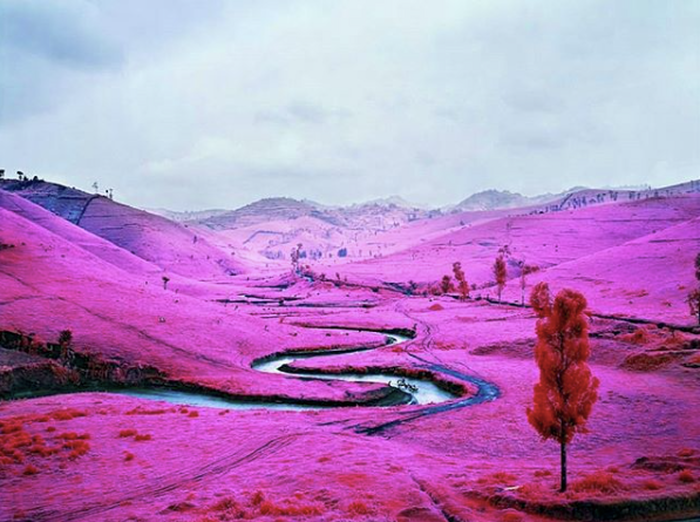Most of What Follows is True: An Exploration of Justine Kurland’s Work
In another instalment of her column, Alice Bergin discusses Justine Kurland’s photography.
Locking eyes with a cowboy through the cinema screen is perhaps our most familiar insight into the North American frontier. Gunshots, gloomy saloons and stony-faced outlaws form the bedrock of the ‘wild west’ in our imagination, thanks to its feature as a recurring backdrop to some of Hollywood’s classics. While the cowboy quest might continue to thrive on the cinema screen, photographer Justine Kurland turns her lens to this dramatic landscape for a wholly different purpose. There are no cowboys in her work. Instead, the South Western plains become the realm of another kind of adventurer – the runaway teenage girl.
With titles like ‘The Guardian Angel’, ‘Blood Sisters’ and ‘The Sirens’, Kurland’s ‘Girl Pictures’ don’t lose any of the magic of the region that entranced a generation of film directors. Shot between 1997 and 2002, her series portrays what she calls an ‘army of teenage runaways’: local schoolgirls staged clambering across branches and crouching in riverbanks with a candid obliviousness to the camera. Often pictured in distressed denim jeans, they do appear in a subtle uniformity one might call military. But there is nothing regimented about these images. They are distinguished by the opposite – a distinct atmosphere of freedom and lawlessness.
"Gunshots, gloomy saloons and stony-faced outlaws form the bedrock of the 'wild west'"
While figures might be perched blowing bubbles or plaiting hair, their world is unashamedly undomesticated, primal. Standing defiantly in long grass in the swirling mists of dusk, they tell us that this is their territory, and it was theirs to be claimed. In ‘Candy Toss’, a trio lean backwards and reach up at the sky, open-mouthed, forming a surreal reincarnation of ‘the three graces.’ It is evocative of the druid rituals of somewhere like Stone Henge, but in t-shirts.
These are not fictitious creatures, but by placing them in mystical landscapes the rites and rituals of the child at play don’t seem so quotidian. As her figures stride across open fields or disappear in undergrowth, Kurland emphasises the adolescent’s sense of quest in a way that ties them, interestingly, with some of the enduring symbols of the ‘wild west’. ‘Romance, rebellion, escape and freedom’ are the qualities celebrated by Kurland’s most recent publisher, Aperture.
For Kurland, adolescence is more than one kind of frontier. Not just the threshold between youth and adulthood, it is beautiful as a borderland between the real and the fantastic. These pictures merge the wonder of childhood with a sense of dawning realism. Their subjects belong both to the imaginary world and the actual one, dreaming of potential but with their feet firmly on the ground.
I am reminded of the opening scene of that classic Hollywood Western, Butch Cassidy and the Sundance Kid. Just before the lights rise on the squinting eyes of a suede-clad cowboy, we are told that ‘most of what follows is true’. It seems to resonate with Kurland’s ‘Girl Pictures’. For the cinema audience, as for the teenager edging towards adulthood in wonder, what will follow will be a mixture of the real and the imaginary. The North American frontier becomes the stage for a new kind of outlaw – an army of mystic adventurers, in denim skirts and jeans.
 Comment / Plastic pubs: the problem with Cambridge alehouses 5 January 2026
Comment / Plastic pubs: the problem with Cambridge alehouses 5 January 2026 News / Cambridge businesses concerned infrastructure delays will hurt growth5 January 2026
News / Cambridge businesses concerned infrastructure delays will hurt growth5 January 2026 News / Cambridge academics stand out in King’s 2026 Honours List2 January 2026
News / Cambridge academics stand out in King’s 2026 Honours List2 January 2026 News / AstraZeneca sues for £32 million over faulty construction at Cambridge Campus31 December 2025
News / AstraZeneca sues for £32 million over faulty construction at Cambridge Campus31 December 2025 Interviews / You don’t need to peak at Cambridge, says Robin Harding31 December 2025
Interviews / You don’t need to peak at Cambridge, says Robin Harding31 December 2025










